| Revista Umělec 2010/2 >> Yekaterinburg: in the footsteps of one’s travel | Lista de todas las ediciones | ||||||||||||
|
|||||||||||||
Yekaterinburg: in the footsteps of one’s travelRevista Umělec 2010/201.02.2010 Alena Boika | in transition | en cs de |
|||||||||||||
|
Yekaterinburg is a city, which can rightly claim to be the chief, if we talk about In Transition. A city where every visitor is trying to find that very point, the Urals, where, you see, it is possible to have one foot in Europe and the second in Asia. A city which can be proud to have the largest number of royal family per unit area. A city which in the 1980’s, still under the name of Sverdlovsk, became the capital of rock and the underground scene. A city in which you can still find outstanding monuments to constructivism which, even though neglected, have miraculously remained intact. A city, where a market with cabbages and potatoes has the most gaping heights of constructivism in the background, is striking for its people; it seems all the inhabitants visit the, “Drum for running on the spot without moving anywhere.” The city where it is impossible not to consider how Bazhov would have been disappointed, as in his melodious tales he described the treasure, secretly hidden in those Ural caves and mountains, but that, here and now, everyone can buy for themselves. All these semi-precious stones and cheap glass shining next to paper calendars, with pictures of the dollar and other presidents, in every kiosk at the corner of Sacco and Vanzetti streets and already nobody remembers who these two people were and why the streets are named in their honor. But everyone knows that on Saturdays they should go to the market and buy potatoes, cabbage, honey and fish, in order to stock up to get through this long, dark and terrible winter, eating warm food, studying and preserving constructivism, reading the tales of Bazhov and arranging the next modern art exhibition or biennial.
Yekaterinburg met a cold wind, impenetrable darkness and classically bad Russian roads. In the hotel, named after one of the most beautiful rivers in the Ural mountains, Iset’, visitors were met with the significant plaque informing them that the Iset’ Hotel is a major part of the downtown architectural complex named Security Complex City (Architects V. Sokolov, I. Antonov and A. Tumbasov), one of the examples of the constructivist period and the symbol of Yekaterinburg city. The building was constructed in 1933 as a commune for the commanding officers of the NKVD, and after a refurbishment in 1961-62 it became the Iset’ Hotel. Never in my life have I had to live in places designed specifically for security officers. The rooms are characterized by their modesty and small size, the window looking out onto a dreary courtyard. I assume the life of a lonely security officer to be an ascetic life, placed in a similar chamber, he could only sleep, read and think about what more should be done to fight enemies and to dream for a better life. His own life in such conditions would not have represented for him any value, some sort of insignificant unit in a tiny closet. Unable to sleep for excitement, I went for a walk in the night. The edifices of constructivism stood, restrained, everywhere, clearly distinguishable even in the dark. Passers-by with kind hearts, in a typically Soviet way, sincerely worried about my t-shirt, “Miss, you’ll catch a cold!” They were in coats, and the snow lightly fell. An announcement, which made me stop and read it in detail, was placed in the window of the library, where a column was written in large letters: REQUIRED: CUTTER ELECTRICIAN TAILOR OF HEADWEAR CLEANER SEAMSTRESS LIGHTING TECHNICIAN FIREMAN YARD KEEPER PROPERTY DECORATOR HOUSE PAINTER There was a strange feeling that this advert still remained from the olden times, when something was still required of everybody. The next morning we arranged an excursion to visit the rest of the constructivist examples, which it was not always possible to immediately recognize under advertising extensions. In Yekaterinburg there is less money than in Moscow and so, some may say fortunately, the historic buildings, the pride of Russian architecture, have not been reconstructed. I can not exactly say what attitude inspires the temple to be covered on all sides by the enlarged black-and-white photographs of the executed Romanov royal family, but I must say, I have never in my life seen so much of the royal family per unit area. The documents, both authentic and otherwise, diaries and art publications (in all languages) showed the infinite images of tortured princes, all of it showed abundance and diversity. At the entrance there were two baskets with the words “Skirts” and “Shawls”, immediately adjacent to an impressive donation box, and a steel fireproof safe, which seemed more appropriate for the town of security officers than the temple. Parishioners with a grim carnivorous countenance hurry into the temple against the backdrop of the city of the future, forever remaining in the past. Our tour guide Darja Kostina said “Now let’s go to the exhibition of contemporary art!” “On what?” we asked. “On what? Contemporary art!” Dasha categorically exclaimed. The city was proud: contemporary art has been brought to them too. Museum workers, having to suddenly deal with these modern travellers, were in confusion, “Do you want the catalogue?” they mistrustfully asked me. “Actually, it costs 100 rubles, but if you like it, we’ll give it to you.” In the modest facilities, in which repairs were urgently required, the attention of the audience was presented with Dmitry Gutov, Anatoly Osmolovsky, Alexey Kalimma, Blue Noses, AES + F, and other pillars from Pierre Brochet’s collection, an active French connoisseur of the skills of Russian art. The project, as it is now fashionable, included something about the future and was based on the past, with the present at which nobody leaves. In one corner, against the great works of Pavel Peppershtein, stood a table and chairs, well who would have thought that such a child-like picture could be serious art? Besides, it is too long. However, the exhibition, despite obviously lacking any love from the townspeople, showed some works which were organically formed in the environment: the best perhaps being the works of Valery Koshlyakov. Whilst walking around the city, I discovered many fascinating nuances, which visually speak for themselves. The park really pleased me, with the simulators placed for physical exercise that are accompanied by detailed descriptions of how they should be used. My favorite was the “Drum for running on the spot”. In the park there are grandmothers, girls in red cloaks, incomprehensible-looking men and scary looking ones. But time passes, bringing to the city changes and developments, which at times in the most comical way incorporate what is in fact, its very essence. We can learn about some parts of this essence from Darja Kostina’s article on Forgotten Utopia. Translated from the Russian by Luba Sirina. Photos by the author.
01.02.2010
Artículos recomendados
|
|||||||||||||
|
04.02.2020 10:17
Letošní 50. ročník Art Basel přilákal celkem 93 000 návštěvníků a sběratelů z 80 zemí světa. 290 prémiových galerií představilo umělecká díla od počátku 20. století až po současnost. Hlavní sektor přehlídky, tradičně v prvním patře výstavního prostoru, představil 232 předních galerií z celého světa nabízející umění nejvyšší kvality. Veletrh ukázal vzestupný trend prodeje prostřednictvím galerií jak soukromým sbírkám, tak i institucím. Kromě hlavního veletrhu stály za návštěvu i ty přidružené: Volta, Liste a Photo Basel, k tomu doprovodné programy a výstavy v místních institucích, které kvalitou daleko přesahují hranice města tj. Kunsthalle Basel, Kunstmuseum, Tinguely muzeum nebo Fondation Beyeler.
|








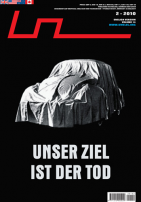






















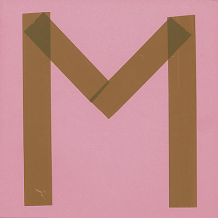
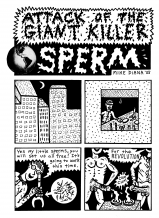
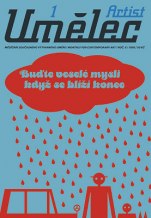
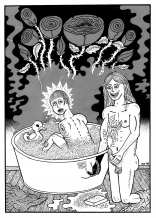


 We Are Rising National Gallery For You! Go to Kyjov by Krásná Lípa no.37.
We Are Rising National Gallery For You! Go to Kyjov by Krásná Lípa no.37.
Comentarios
Actualmente no hay comentariosAgregar nuevo comentario